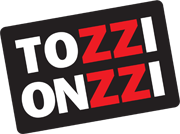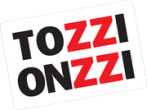The Russell 2000 is a stock market index that tracks the performance of 2,000 small-cap U.S. public companies. Managed by the U.K.-based FTSE Russell Group, the Russell 2,000 is a subset of the Russell 3000 index. The Dow Jones Industrial Average is a stock index that tracks 30 of the largest U.S. companies. Created in 1896, it is one of the oldest stock indexes, and its performance is widely considered a useful indicator of the health of the entire U.S. stock market. The index’s returns can be replicated by investors who take the trouble to create a sizeable and complex portfolio that mirrors the index. However, there are far easier ways to get the same returns.
The Russell 2000 Index was launched in 1984 by the Frank Russell Company. It is a U.S. index and is managed by FTSE Russell, which is a subsidiary of the London Stock Exchange (LSE) Group. Emily Guy Birken is a former educator, lifelong money nerd, and a Plutus Award-winning freelance writer who specializes in the scientific research behind irrational money behaviors. Her background in education allows her to make complex financial topics relatable and easily understood by the layperson. She is the author of four books, including End Financial Stress Now and The Five Years Before You Retire.
- The index is comprised of the 2,000 smallest companies in the Russell 3000, which itself covers roughly 98% of the stocks publicly traded in the U.S.
- More sophisticated investors may also trade Russell 2000 Index futures contracts.
- The most heavily traded of the ETFs is the iShares Russell 2000 index ETF (IWM).
- We believe everyone should be able to make financial decisions with confidence.
- The Russell 2000 Index was launched in 1984 by the Frank Russell Company.
However, since the S&P SmallCap 600 tracks less than one-third of the number of companies in the Russell 2000, it provides a much narrower understanding of the small-cap market as a whole. Like the S&P 500, many economists consider the Russell 2000 a reasonably accurate barometer of the U.S. economy, particularly as it applies to smaller companies. For the major indices on the site, this widget shows the percentage of stocks contained in the index that are above their 20-Day, 50-Day, 100-Day, 150-Day, and 200-Day Moving Averages. Get stock recommendations, portfolio guidance, and more from The Motley Fool’s premium services.
Lunar New Year 2024: What history says about the stock market and gold in the Year of the Dragon
As of Oct. 31, 2023, the average value for a company on the Russell 2000 was $2.70 billion while the median market cap was $0.77 billion. The largest stock by market cap on the index was $12.63 billion. The Russell 2000 first traded above the 1,000 level on May 20, 2013. However, with that greater potential for risk comes built-in greater potential to grow exponentially. It’s easier, after all, to double your value when your stock is worth $10 than when it is worth $100. Every year, FTSE Russell Group rebalances the Russell indexes.
U.S. stocks are about to accomplish something that hasn’t happened since 1972
Whether you welcome the higher-risk/higher-reward opportunity or not, most investors will not want to make Russell 2000 funds a major portion of their portfolio. Even with the broad exposure of 2,000 companies, the risk inherent to this market segment means it is not necessarily an index to stake the majority of your portfolio on. The Russell 2000 index tracks the 2,000 smallest public companies by market cap in its parent Russell 3000 stock index. The remaining 1,000 companies are grouped in the Russell 1000 large-cap stock index. To determine which stocks will make up the index, FTSE Russell ranks all U.S. securities from largest to smallest market capitalization. The investing information provided on this page is for educational purposes only.
The Russell 2000 is, itself, composed of the two-thousand smallest companies in the broad Russell 3000 Index. Barchart Plus Members have 10 downloads per day, while Barchart Premier Members may download up to 100 .csv files per day. Pages are initially sorted in a specific order (depending on the data presented). You can re-sort the page by clicking on any of the column headings in the table.
Market Data
The information below reflects the ETF components for Russell 2000 Ishares ETF (IWM). The takeaway is that while these aren’t exactly tiny enterprises, they aren’t giant companies either. That’s the key difference between the Russell 2000 and the “headline” indexes. Instead, here are 10 of the largest Russell 2000 companies, just to give you an idea of the types of companies that make up the index.
Because of this, there is not much overlap, if any, between the stocks held in each index. For comparison, the S&P SmallCap 600 covers approximately 2.5% of the U.S. stocks by market cap whereas the Russell 2000 covers about 10%. We believe everyone should be able to make financial decisions with confidence. For example, the Russell 2000 growth index ema forex is designed to gauge how small-cap growth stocks are performing. About 1,300 stocks out of the broader Russell 2000 qualify for the growth subindex, with the technology and healthcare sectors making up the largest contributions. Unlike its more famous S&P counterpart, the S&P SmallCap 600 tracks smaller companies, similar to the Russell 2000.
While the Russell 2000 is designed as a barometer of small-cap stocks, there are some subindexes composed of stocks in the Russell 2000. As a real-world example, in the 2021 reconstitution, GameStop (GME 1.12%) was added to the Russell 1000 and removed from the Russell 2000 after its price https://forexhero.info/ soared in the meme stock craze. In all, 56 companies were added to the Russell 1000 in 2021, with 30 of them moving up from the Russell 2000. The largest company in the Russell 2000 index has a market cap of roughly $10 billion. The smaller ones have market caps in the $200 million range.
Scroll through widgets of the different content available for the symbol. The “More Data” widgets are also available from the Links column of the right side of the data table. Available only with a Barchart Plus or Premier Membership, you can base a Stock Screener off the symbols currently on the page. This lets you add additional filters to further narrow down the list of candidates. At the top, you’ll find a histogram containing today’s high and low price.
The Russell 2000 Index
Stock markets are dynamic, and companies rise and fall in market cap over time, and new companies launch that deserve placement on the indexes. FTSE Russell takes corporate activity into account on a daily basis. A company’s presence in an index or its weight in the index can change based on company actions, such as a merger or acquisition. Each quarter, eligible companies that debuted on the markets through an initial public offering, or IPO, are added to the appropriate index. This is to be expected since the average includes data from the previous, lower priced days. As long as prices remain above the average there is strength in the market.
FTSE Russell sticks to an annual cadence for reviewing and changing the makeup of its U.S. indices based on updated market capitalization. For the Russell 2000, the purpose is to remove companies that have outgrown the index and would distort measurements of the small-cap segment of the stock market. As a segment of the market, small-cap stocks are considered more aggressive investments compared with large-cap stocks, which are considered more conservative. This is because small-cap stocks tend to be smaller, younger companies that are more likely to be impacted by changes in the economy, for good or bad. These companies also tend to be more niche or have fewer streams of income, which can make them less stable than broader companies serving larger markets and with multiple sources of revenue.
As a subset of that index, the Russell 2000 includes stocks ranked Nos. 1,001 to 3,000 in the Russell 3000. These stocks amount to roughly 10% of the total market capitalization of the larger Russell 3000 index. In comparison, the Russell 1000’s large-cap stocks represent approximately 92% of the total U.S. stock market.
This tool will download a .csv file for the View being displayed. For dynamically-generated tables (such as a Stock or ETF Screener) where you see more than 1000 rows of data, the download will be limited to only the first 1000 records on the table. For other static pages (such as the Russell 3000 Components list) all rows will be downloaded. Also unique to Barchart, this feature allows you to scroll through all the symbols on the table in a chart view. Unique to Barchart.com, data tables contain an option that allows you to see more data for the symbol without leaving the page. Click the “+” icon in the first column (on the left) to view more data for the selected symbol.
One of the oldest stock indexes, the Dow Jones tracks 30 of the largest U.S. companies. If you want to invest in the Russell 2000 Index, you don’t need to buy all 2,000 stocks. You can invest in the index rather easily through a mutual fund or exchange-traded fund (ETF) designed to track it passively. In a nutshell, the Russell 2000 is composed of smaller and more volatile stocks than those in large-cap indexes.

